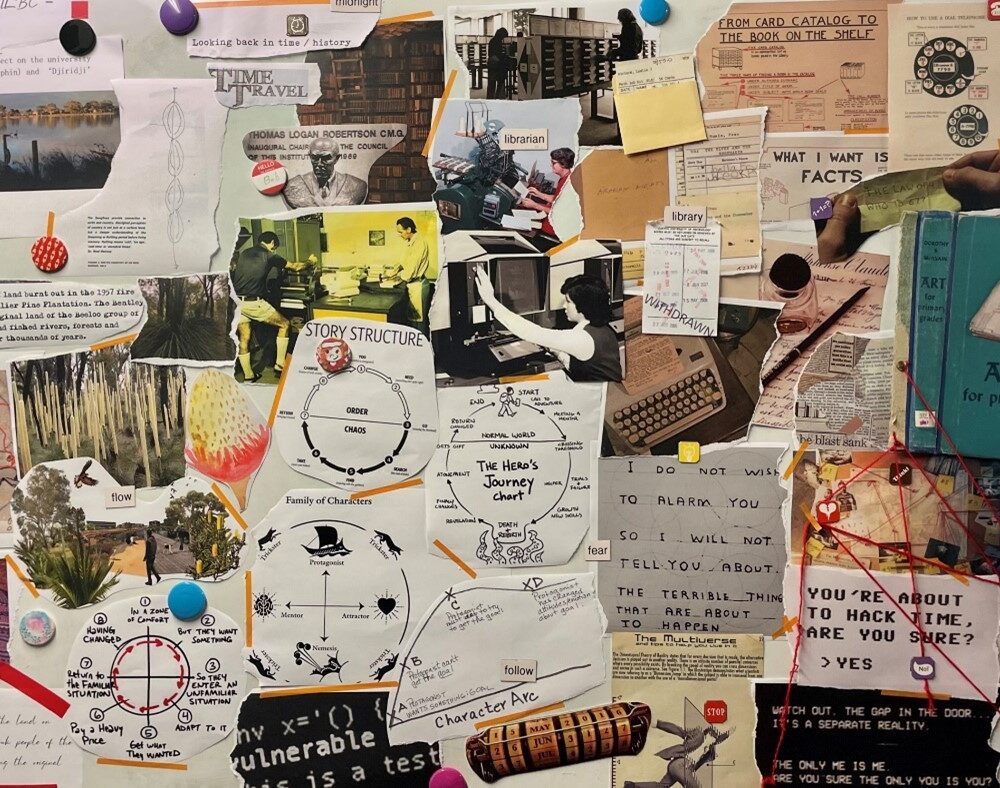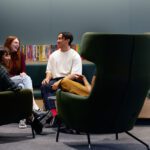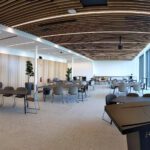ROGUE is a location-based puzzle game launching in the refurbished TL Robertson Library during Orientation Week. Using their own personal devices, players will assume the role of a system administrator to help Akiko – the Library’s fictional artificial intelligence (AI) – fix suspicious errors in her system caused by an unknown entity. By working through puzzles and discovering information, they will uncover the truth and face a choice: who can they trust?
When it was first pitched, ROGUE was only an idea: an innovative way to experience the Library. I wanted to use my background in media to challenge the perception of the Library as a place for only books and study. A transmedia experience was the ideal way to do this. I pictured a non-linear story told through a variety of story forms, such as chat logs, news articles, audio recordings and physical items. It would be a playful way to explore and discover the Library, while prompting the use of problem solving and critical thinking skills.
It was this pitch that was selected by Library staff to progress as an initiative in 2022 in the Library’s annual ‘Innovation Initiative Scheme’. The Library’s Innovation Initiative Scheme aims to encourage and recognise proposals for innovation which will benefit the Library and its clients, by inviting Library staff to nominate ideas to progress as an initiative the following year. The winning idea is selected by a voting process with Library staff. After forming a project group in early 2022, work on ROGUE began with the aim to launch with the Library building’s re-opening. The development process was a challenge for the team, but also a breath of fresh air. None of us were game designers; however, we were keen to do something creative, innovative and new.
Initial steps focussed on the team becoming familiar with games from both a development and a player perspective. This process included meetings with Curtin University staff experienced in game design; an excursion to play through Boola Bardip’s scavenger hunt game Codebreakers; and research into alternate reality games (ARGs), particularly in library and higher education settings.
As a team, we had three goals we wanted to achieve:
- An ARG spanning approximately three different forms of media.
- An alternative Library tour experience focussed on community and critical thinking.
- A game that is available year-round that can be played at any time.
With these in mind, the team got to creating. We ran design thinking sessions in the Library Makerspace to aid narrative creation, led by Curtin’s Learning Innovation and Teaching Excellence Centre (LITEC) Learning Designer Brett Cullen and Visual Technology Specialist Wesley Lamont from Curtin’s Hub for Immersive Visualisation and eResearch (HIVE). The team had freedom to create whatever story they liked, as long as it included elements of mystery and history.

The final idea chosen was that of a rogue AI who had infiltrated the Library systems. The team felt the concept was an exciting yet relevant story to explore. At the time of writing this article, AI has become even more pertinent to universities due to the popularity of ChatGPT. Further development also linked ROGUE to other Library programs through the inclusion of Akiko, a minor 23 Things program character, as the Library’s AI and ROGUE‘s player guide.
Following the consensus on a narrative, the team split into two: a puzzle group and a story group. The puzzle group handled the creation of all puzzles and the construction of the game’s digital interface. The story group’s focus was the writing of character dialogue, in-game text, and promotional material.
All game elements were created using material available within the Library building, such as resources and equipment from the Library’s Makerspace, as well as open-source software or software already licensed by Curtin. ROGUE runs in Qualtrics, a web-based platform typically used for creating and conducting surveys.

By September, we had a first prototype for team testing. After feedback and review, we recruited wider Library staff for play-testing in November.
The play-testing process was vital as we gained the perspective of people not attached to development. The collected feedback provided practical information that we used to improve the game. Additionally, it was wonderful to see the positive staff response to our hard work! One of these acknowledged that “doing difficult complex new things is hard and… many will have ‘frank feedback’, but that’s because [it’s] a cool new thing”.
Overall, we as a team are incredibly proud of what we have achieved in a year with ROGUE. We have created a game that introduces you to important Library locations and the history of Library technology, and prompts users to problem solve, think critically and connect with others. Final details are being wrapped up in the weeks before launch and we are excited for it to be released into the world.
You can play ROGUE by scanning the QR codes found within the refurbished Library space and following the prompts. We recommend bringing a pen and paper with you to work through the puzzles. While we encourage students to complete the game in teams, individual users will be able to complete it on their own or join forces with other players during the process.
Explore the building. Solve puzzles. Uncover the truth.
Good luck.
We will be seeking feedback through the game and making routine updates in response. For any questions, please contact miah.defrancesch@curtin.edu.au
Written by Miah De Francesch, Learning Success Advisor.
Enjoy reading Library news? Sign up to our newsletter.



